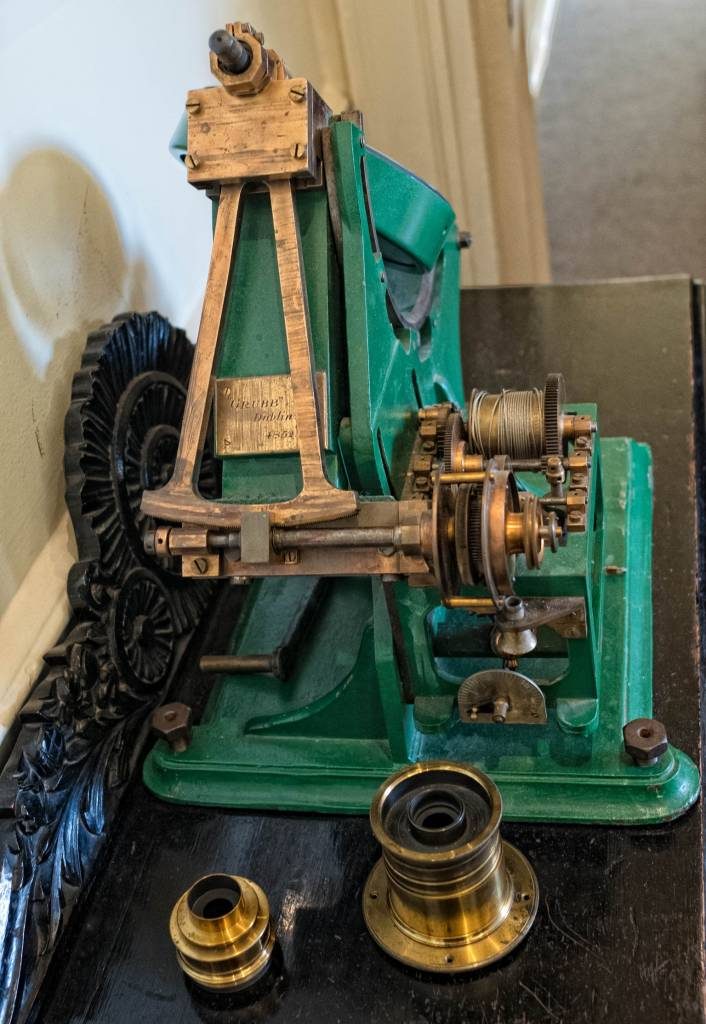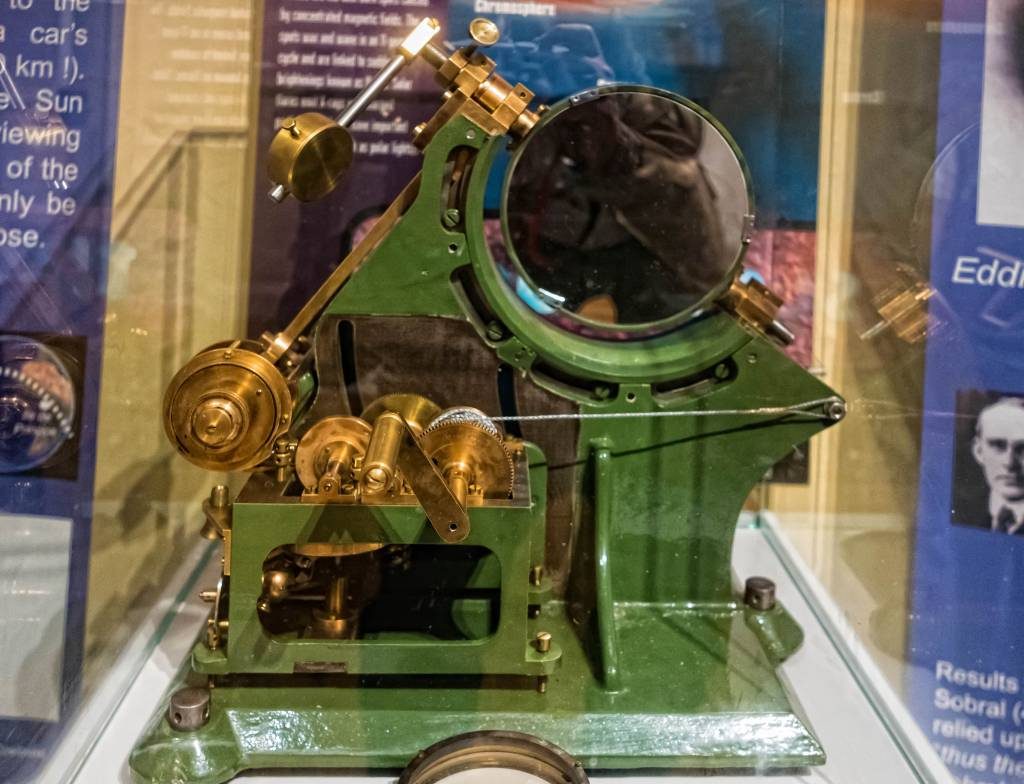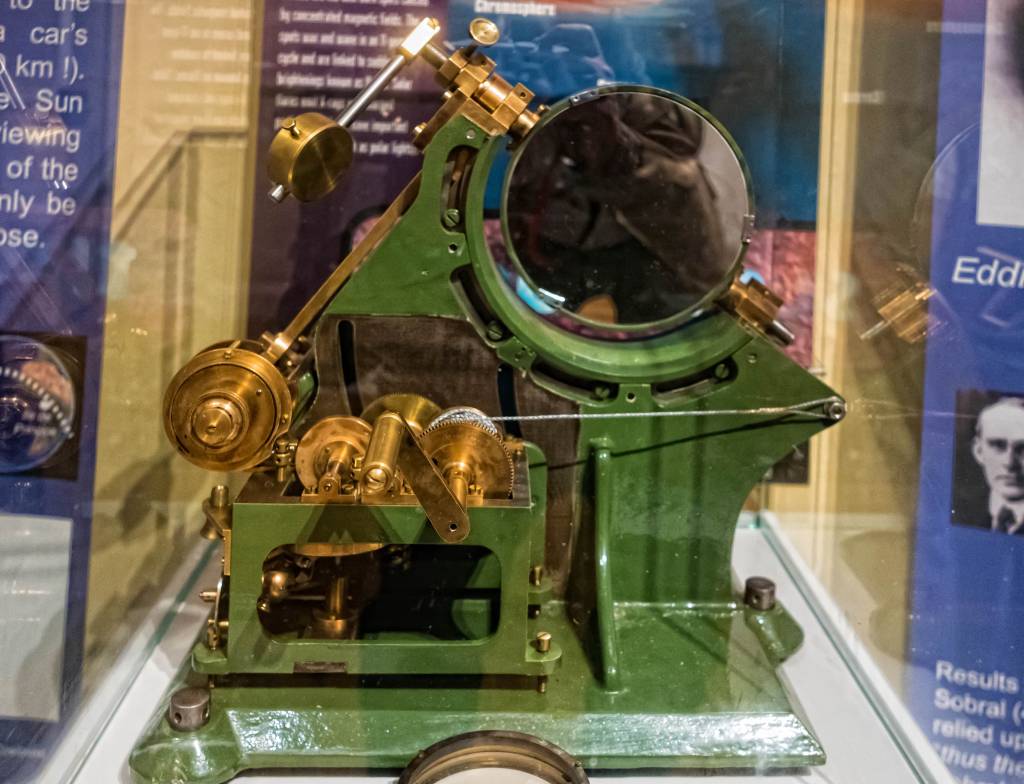Our contributing author William Fagan reminds readers that 100 years ago today a machine called a coelostat, which was made by Grubbs in Rathmines, Dublin, was used during a solar eclipse in Brazil to prove Einstein’s Theory of Relativity.

In recent years William has taken a great interest in Grubb lenses and is building up quite a collection.
To commemorate the centenary of the 1919 solar eclipse, William has sent us two pictures of the machines in Dunsink Observatory, Dublin. The machine in the glass cabinet (below) is the one



As it’s gone unremarked so far, I’d mention that the optical stuff was used to take photos – in Brazil, and also on the island of Principe, off the west coast of Africa – of the sun’s eclipse by the moon one hundred years ago.
The point of the photos was to compare dots of starlight close to the sun in the eclipse photos, with sky photos taken when the sun was not directly in line with (..or obscuring..) those stars.
Comparisons of the stars’ apparent positions in a ‘clear’ sky, and when the sun was between us and them, showed that light from stars behind the sun was bent around the sun when it was between us and them (..so-called ‘gravitational lensing’..) and so proving Einstein’s incredibly insightful idea (..of ‘General Relativity’, published in 1915..) that the presence of a mass in space bends the space around it ..what we experience as ‘gravity’.
It was the photography which gave clear evidence of Einstein’s gravitation theory.
Thanks for the explanation, David. I confess I didn’t understand this so it’s good to know.
Thanks David
There is a book called ‘No Shadow of a Doubt’ by Daniel Kennefick which has been published this week. It goes into the events of 1919 in extreme detail. One point of note is that a Jesuit priest Father Aloysius Cortie had been using the lenses and mirrors for astronomical observations and wished to go on the expedition, but his superiors stopped him from going- shades of Fr Frank Browne and the Titanic. I have just downloaded the Kennefick book and will dip into it during a trip to Italy next week. I have another article about the Grubbs coming up for PCCGB (the people who organise Photographica), but I have so much material now, particularly about the Grubb photographic lenses, that I could probably produce a book myself, except that I am working on another book with a wider dimension than the Grubbs, but they will get a mention in it, course.
William
Hi William,
I for one would love to see the images you took using this glass, and also understanding how you did It.
Enjoy the travelling.
Dave
Thanks for pointing this out so quickly, Dave. It was an editing mistake. It should be five billion and I’ve updated the text.
Ooops – wrong article! ..”95% of humans..” perhaps?
😂
Ta 😀
Readers may be interested to know that I have used the smaller Grubb lens (from 1863) shown on the left above on a modern digital camera using a bellows and various adaptors. I have done some close up shots with the lens reversed and readers may be surprised at the results. I am traveling over the next week or so and will try to send something to Mike in the second week in June, including some explanations as to how I did the set-up.
William